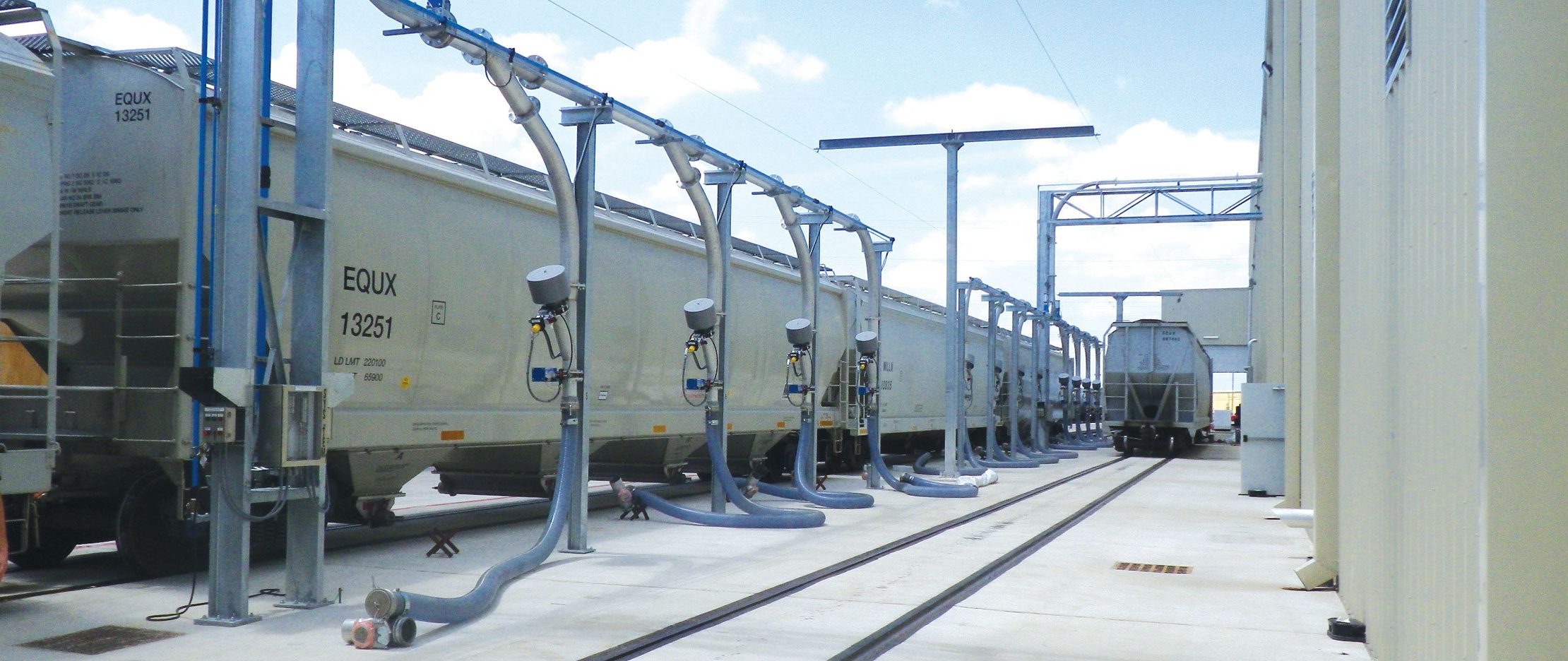
In the bulk solid material handling industry, efficient railcar unloading is crucial for maintaining smooth operations, minimizing downtime, and maximizing productivity. Delays in unloading can lead to bottlenecks, affecting the entire supply chain. By streamlining this process, companies can enhance workflow, reduce labor costs, and improve customer satisfaction. Implementing the right strategies and technologies can significantly and swiftly improve your railcar unloading process.
1. Implement Pneumatic Conveying Systems
Pneumatic conveying systems are an excellent solution for rapid and efficient railcar unloading. Particularly effective for bulk solid materials, pneumatic conveying systems use air or gas to transport bulk materials through enclosed pipelines, providing significant benefits including:
Speed: Pneumatic conveyors can move materials quickly, reducing unloading time.
Flexibility: The system can be designed to navigate around obstacles and reach multiple destinations within your facility.
Cleanliness: The enclosed nature of pneumatic systems minimizes dust and material loss during transfer.
2. Optimize Your Conveying Method
Choose the right conveying method based on your material properties and handling requirements:
Pressure or Vacuum Conveying: The selection of transfer modes depends on your railcar's design. PD-style railcars allow for the vessel to be pressurized and conveyed under positive pressure, similar to pneumatic bulk trucks. Hopper bottom railcars are needed to be unloaded under negative pressure and often done in a pull-push scenario where the product is pulled to an intermediate vessel (i.e., filter receiver) and then pressure conveyed to the destination (i.e., storage silo), often located at a greater distance away.
Dilute-Phase Conveying is ideal for lightweight materials and longer distances. It uses high-velocity air to suspend particles in the airstream.
Dense-phase conveying is better for abrasive, fragile, or heavy materials. It operates at lower velocities and higher pressures, reducing material degradation.
3. Enhance Material Flow
Improve the flow of materials from the railcar to your conveying system:
Fluidization: Use air slides or fluidizing membranes to create a "cushion of air" that helps powders and free-flowing products move more quickly.
Pneumatic Vibrators: Install pneumatic vibrators along the railcar hopper to prevent material bridging and ensure consistent flow into the conveying system.
4. Employ Specialized Equipment
Incorporate specialized equipment to enhance your efficient railcar unloading process:
Magnum Systems H-Valve: When unloading PD-style railcars, this valve assembly allows the product to be unloaded more quickly and farther by stepping the line size just after discharge from the container and proportioning blower air both to and around the vessel for the most efficient use. In addition to this main feature, it allows controlled blowdown of the empty container and automated switching of compartments of railcars as well, increasing unloading automation.
Venturi Eductors: These devices can efficiently feed powders and bulk solids into the pneumatic conveying system, eliminating blowback and requiring minimal maintenance.
Smart Elbows: Implement specialty elbows in your conveying lines to reduce wear and prevent product degradation at turns.
Magnetic Separators: Install pneumatic conveying magnets to ensure product purity and protect machinery from tramp metal damage.
5. Automate the Unloading Process
Automation technology plays a vital role in improving unloading efficiency. Implementing sensors and controls can help monitor and manage the unloading process more effectively, allowing for real-time adjustments and reducing human error. Automated systems can also streamline coordination among different stages of material handling.
Implement automation technologies like the ones below to streamline your railcar unloading:
Sensors and Controls: Use level, pressure/flow sensors, and automated controls to monitor and regulate material flow from the railcar to your storage or processing facilities.
Programmable Logic Controllers (PLCs): Integrate PLCs to manage the entire unloading process and optimize air pressure, conveying rates, and system performance.
6. Training Your Team
While equipment and automation are essential starting points for an enhanced and efficient unloading process, the success of any unloading process largely depends on the operators' skill level. Providing thorough training ensures team members can operate machinery efficiently, troubleshoot issues quickly, and adhere to safety protocols. Continuous skill development through training programs is essential for maintaining high levels of efficiency.
7. Conduct Regular Maintenance and Upgrades
Equipment needs to be regularly maintained to ensure long-term efficiency in unloading railcars. Proactive upkeep can prevent breakdowns that lead to costly delays. Additionally, staying informed about the latest technologies and upgrading equipment when necessary can help maintain optimal operational performance.
To maintain peak efficiency:
Preventive Maintenance: Establish a regular schedule for all your unloading and conveying system components.
System Audits: Periodically assess your entire unloading process to identify bottlenecks or areas for improvement.
Technology Upgrades: Stay informed about the latest advancements in pneumatic conveying and material handling technologies and upgrade your system when beneficial.
By emphasizing efficiency through the right equipment, automation, training, and maintenance practices, businesses can significantly enhance their railcar unloading processes, improving productivity, and reducing operational costs.
Implementing these strategies can significantly enhance the speed and efficiency of your railcar unloading operations. Remember, the key to success lies in choosing the right combination of technologies and methods that best suit your specific materials and operational requirements.
Magnum Systems podcast series, AIM!
RELATED POSTS
AIRLIFT RAILCAR DISCHARGE ADAPTER
H-VALVE for PD Truck and Railcar Unloading
Railcar Unloading Doesn’t Have to Be in the Pits
Related Post
Five Ways to Expand Automation Through Controls Migration Without Sacrificing Employee Morale
Predictive Maintenance Part Three: Predicting the Future of Industrial Systems
Predictive Maintenance Part One: The Lifecycle Advantage for Maximizing ROI